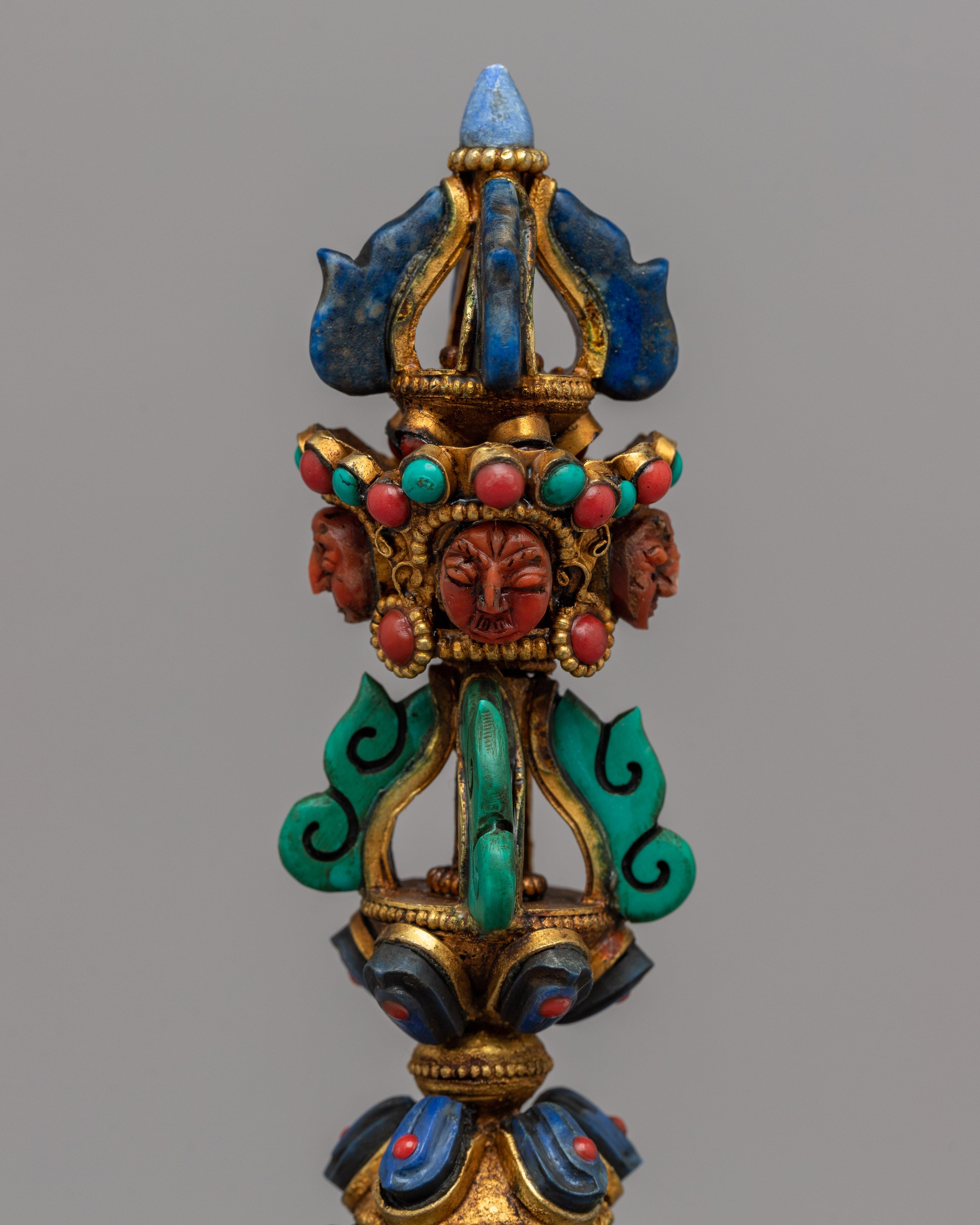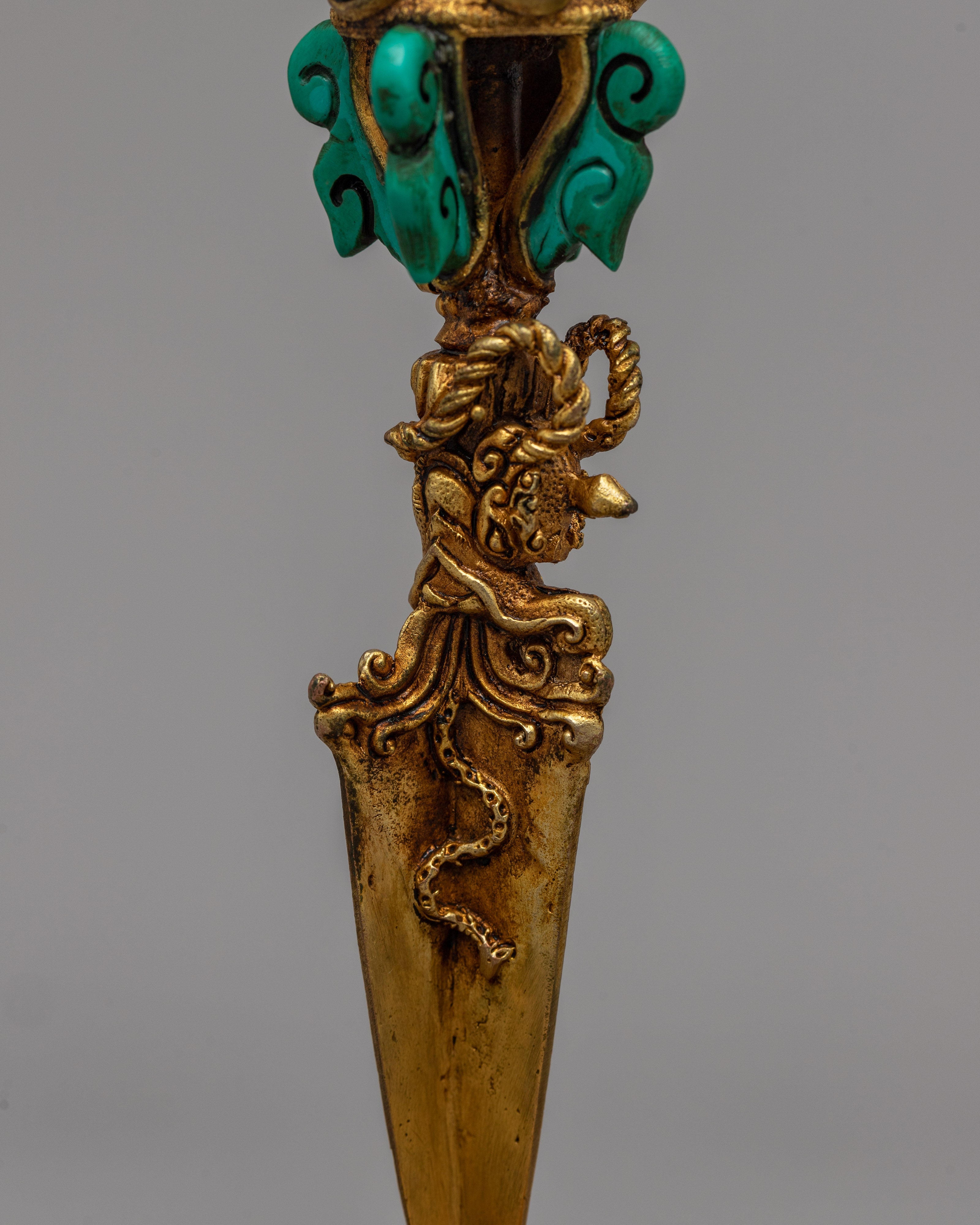Description
Ritual Dagger " Phurba"
About our phurba
Find out the Phurba, a Ritual Dagger that defies both the rules of craftsmanship and the codes of conduct of spirituality. This exquisite work of art is painstakingly handcrafted on a copper body and enhanced by a lavish 24k gold plating that radiates respect and elegance.
The precious stones this Phurba proudly displays—Coral, Lapis Lazuli, and Turquoise—are what truly distinguish it from others. With Coral symbolizing vitality, Lapis Lazuli wisdom, and Turquoise healing energy, each of these gemstones has a sacred meaning. The Phurba is a powerful tool for your spiritual endeavors thanks to the divine energies that are infused into it by this trio of gemstones.
The Phurba comes with a stand so you can proudly and honorably display it as a sign of its reverence. This Dagger is a magnificent addition to your sacred collection, whether you are drawn to it because of its exquisite aesthetics or the profound spirituality it embodies.
Discover the captivating appeal of the Phurba, a transformational symbol, as it leads you on your spiritual path with unwavering grace and strength.
Introduction To The Buddhist Ritual Dragger :
Ritual tools are vital equipment of Tibetan Vajrayana Buddhism practice, meant to dispel misconceptions obstructing enlightenment. The phurba (Sanskrit: Kila) blade seen here was created to symbolically swallow the three poisons that obstruct spiritual progress: ignorance, greed, and illusion. The Phurba is the physical manifestation of the Vajrakila Buddha, who has the ability to destroy all evil on the earth. Its ceremonial usage is first recorded in the Vajrakilaya Tantra, an eighth-century or older Vajrayana work.
--------------------------------------------------
Size: 25.5cm(Height) x 13cm(Width)
Weight: 0.34 kg
--------------------------------------------------
How to set up your own Buddhist Shrine?
Find a clean, quiet, and uncluttered spot.
Set up an altar table, and cover it with an altar cloth that calls to you.
Place your sacred item (statue, thangka, or a picture of Buddha) at the center.










